Erich asked what kind of tea we drink. Tea is a subject dear to our hearts, so we thought we’d discuss it today.
First, some background. Over at Planet Tea they have a useful flowchart describing how different kinds of tea are made:

The critical step is fermentation, which oxidizes the leaf and turns it black. Green tea is unfermented; oolong (wu long) is partially fermented; and black tea (in Asia, “red tea”) is highly fermented. Black tea has a longer shelf life than green tea.
Growing region matters. Mainland China is by far the world’s largest producer of tea, but China is extremely polluted and we would not trust Chinese tea. Japan and Taiwan both produce excellent green teas; we drink tea from both countries.
Taiwanese Tea
The Taiwanese teas with the highest reputation are “high mountain tea”; these are grown at high altitudes above the smog. We drink both green and oolong high mountain teas from Taiwan. Ours come in 300 g vacuum-packed packages:
The one on the left is green tea, the one on the right an oolong; both are “high mountain” teas. Each package weighs 300 g. We use about 4 g (20 leaves) of tea per day, and so a package lasts about 3 months. A single 300 g package of high quality tea may cost $100, so the total cost is about $1 per day; but multiple cups of tea may be obtained from each day’s tea.
The leaves are rolled and dried during processing, and shrivel to a very small size, then re-expand when placed in warm water. Here is what they look like:
Left — rolled and dried leaves, ready to make tea. Right — an opened bud, after being used.
The opened bud on the right gives you a good idea what the leaves look like on the tea tree. Workers pluck these small buds from the trees and place them in baskets; the finest buds are plucked early in the spring.
Aside: Some Equipment
For best results it’s important to use pure water. Tap water produces a discolored tea with a foul taste. We get good results filtering our water in a Britta filter. In fact, we judge that it’s time to change the filter when our tea changes taste. The Britta instructions recommend changing the filter every two months, but we find it needs to be changed every month if our tea is to retain its flavor.
If you make tea often, it’s helpful to have a hot water dispenser, like this one from Zojirushi, along with your Britta filter:
Tea is best when the leaves have steeped for about 5 minutes. Since you may take much longer to drink the tea, it’s important to steep the tea in a separate container from your drinking mug. Here’s what we use:
Left — An Asian “busy person’s” tea-pot. A container at top holds the tea leaves and enough water to make a single cup. When the leaves are done steeping, pressing the red button drains the water into the pot, after which it can be poured into a mug. Right — an airtight container we use to store our tea leaves.
Alternatively, Asian supermarkets sell teacups in 3 parts — a mug, a container to hold the tea leaves, and a lid to cover while the tea is steeping. They look like this:
The tea leaves go in the removable upper part; when it is removed the tea drains through the holes in the bottom into the mug. After drinking a cup, the upper container with the leaves can be put back in and more hot water added to steep another cup.
Making the Tea
To make the tea, place 15-20 rolled buds into the leaf container, and add hot (near boiling) water. Taiwanese green tea typically requires 3 to 5 minutes to steep, and the tea is actually yellow, not green.
Shou-Ching likes her tea prepared the classic way. Add hot water to new leaves, and drain it after 30 seconds as the leaves just begin to open; this is thought to clean any impurities. Then add new hot water, let it steep 3 to 5 minutes, and drink this second batch. This produces a delicate, light yellow tea. Paul lets his steep a bit longer to make a slightly darker tea and adds a lemon slice. Here is what they look like:
Japanese Green Tea
Japanese green tea is made with a different process; the tea leaves are usually crumbled, not rolled. Here is what they look like:
These crumbled tea fragments are placed directly in the teacup and produce a green-colored tea. Yes, the tea leaves can be swallowed. Here is a comparison of a cup of Japanese green tea (left) with a Taiwanese green tea (right):
Obtaining Fine Teas
We are regularly sent tea by relatives and friends in Asia, so we haven’t had to shop for tea in the US.
However, Google searches turn up a number of vendors. “Tea from Taiwan” has some good-looking teas. Reader Gary Wilson kindly wrote to recommend Upton Tea Imports. And here are some Amazon links, not all currently available:
- First Grade Green Tea (Chinese Tea / Taiwanese Tea) – TenRen’s Brand (Free Gift Included – Bloosom Lotus Lucky Knot)
- Oolong Tea-Alishan High Mountain Tea,The Unique Local Climate and The Selection Criteria for Leaves Make Alishan Oolong Tea Rarity. 150g/bag Comes With Beautiful Tin Can.One of The Best Tea in Taiwan You Should Try.
- Taiwanese Tea Sampler (3 Tins) – Jasmine, TiKuanYin (Iron Goddess) & Dong Ting Oolong (Wu Long) Tea (Loose Tea)
At roughly $1 per day, fine tea is not inexpensive. However, many people spend as much or more on coffee. Paul makes 5 or 6 cups per day from a single 4 g set of leaves, so the cost averages to only $0.20 per cup.
If your only knowledge of tea is derived from the Lipton Tea Company, we very much recommend that you give fine green or oolong teas a try! You might find tea more pleasant and enjoyable than you imagined.







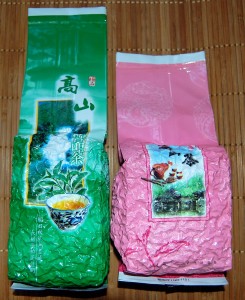
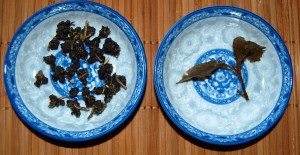
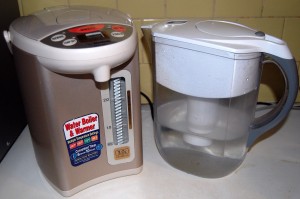
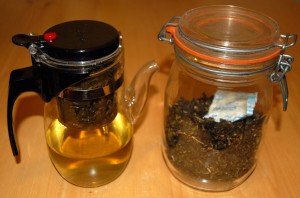
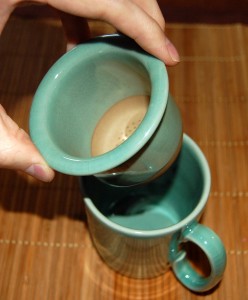
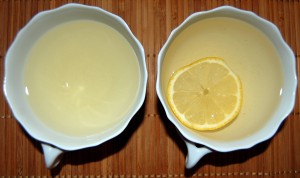
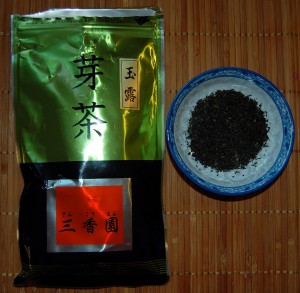
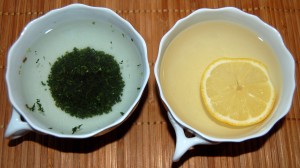




What is your opinion of Rooibos red tea? I’m very sensitive to caffeine so I drink herbals instead if regular tea leaves.
Hi Haig,
I’m afraid I don’t know much about it.
Our presumption against legumes probably doesn’t apply, since it is the seeds, not the leaves, that have the toxic proteins we’re concerned about. Also, the fermenting should help detoxify it.
It looks like an interesting herb. The Wikipedia page notes that it has antifungal properties, something that always catches my eye.
Your tea post reminded me we had a large unopened package of tea in our cabinet, so I took a closer look at it. I think it was a present to my husband (he’s a graduate program dean) from a student (Taiwanese, I think), and it came with a lovely tea set. Frankly, I paid more attention to the tea set than the tea.
I just weighed the package; it’s 300 grams of tea. Yikes, could this be much better tea than I realized? I hope it hasn’t gone stale. I’ll bet it’s about two years old, maybe even three – but the package is still vacuum sealed. I drink a variety of teas fairly often (usually in the afternoon), but I kind of forgot about this one up on a high shelf.
Most of the text on the package is in Asian characters, so I can’t read everything, but it has Tea Making Instructions in English on the decorative outer “gift” box. On the inner vacuum bag it says in English that it is “Choicest Tea of Taiwan High Quality”, and it has further tea instructions, including “discarding the first ‘Wen Jun’ pot to wash away impure substances and tastes, as well as to allow the leaves to spread out and remove the grassy taste”.
The next step is “Chung Pao”, which can be poured into the cup after brewing only 30 seconds. Each time boiling water is added to the teapot, an additional 10 seconds is needed to maintain the tea’s fragrance.
The text becomes rather, um, dramatic – “you should first drink half the cup, then slowly turn the cup as you sip, while exploring the fragrance and appreciating it with your heart. Allow the essence of the green tea and the aroma of soaked leaves to sweep your senses and enjoy the unique experience of natural flavor.”
Have I unknowingly let very nice tea waste away?
I’m a big fan of white teas. They’re not as common as green or regular teas, but they seem to be showing up on more store shelves. They have the least amount of caffeine of all teas, yet they still have a nice flavour.
Paul – have you guys heard of any good white teas from Japan or Taiwan you can link to me?
I love Japanese matcha green tea when I want something more coffee/espresso like. Good quality is quite expensive but it’s supposed to be one of the healthiest green teas.
Paul, if you ever have to shop for tea ;), I really like this Japanese company to buy my green tea:
http://www.hibiki-an.com/
What about the fluoride in tea? I also have all sorts of problems with caffeine. I need a fluoride-free, caffeine-free tea!
Hey Paul
I do like the Asian “busy person’s” teapot.
But I’ll go for the ceramic 3 part mug set.
Nice information – thanks.
BTW — I SERIOUSLY LIKE your general style. Low key, data driven aka empirical, ZERO “propaganda fidei” and humourous.
Slainte mhaith dhuit
– Gaelic for “good health to you” – also used while imbibing alcohol.
I buy my Japanese green tea here:
http://www.japanesegreenteaonline.com/
Very high quality. They also sell the equipment for making green tea in the traditional Japanese way, different from what Paul described here.
I also worry somewhat about the fluoride in tea, which apparently can be very substantial; and, in the case of any given tea, it’s generally impossible to know the dose. For those of us taking ? 12.5 mg of iodine per day, fluoride may be less of a concern, but it does seem to be a potentially quite toxic halide with a fairly worrisome research literature (see, e.g., http://www.fluoridealert.org/health/).
Perhaps in natural form such as tea, with all its other constituents, fluoride is safer than as a chemical artificially added to water supplies. I hope so!
againstthegrain – Give it a try! It sounds like you received a very nice gift.
You don’t need to follow all those detailed instructions. Those are the traditional steps for elegant, refined tea serving — known now as “old people’s tea,” because only retired people have time to do it that way!
Hi Robert – We haven’t, sorry, but Shou-Ching will keep an eye out. (She reads Chinese and may be better able to find vendors.)
Thanks, Longquan!
Hi Eden, I don’t know much about flouride levels in tea. I don’t even know where one obtain data about it.
However, iodine supplementation helps to drive flouride out of the body, so it may be protective.
Thanks, LeonRover! Good health to you too!
Hi Bill,
I’m also relying on iodine to protect me against these. It would be nice to have unfluoridated water also.
Hi,
I’ve read in a couple of sites that organic tea should have minimal or no fluoride at all. If true, something worth keeping in mind…
I love this post, but where’s the love for puh-erhs? =)
For Robert on whites, I’ve never seen any whites come from Japan. They almost exclusively come from China or India (these being closer to greens). Adagio and SV Tea both sell very high-grade Chinese whites, though.
For those who wonder what a puh-erh is, see http://en.wikipedia.org/wiki/Pu-erh_tea
Becky, I’ve never had Pu-erh tea. I’ll ask Shou-Ching what she thinks of it!
UPDATE: Actually, we have some at home. But Shou-Ching doesn’t like it, and doesn’t trust tea made in China, so she hid it.
I’ll try some tonight and see what it’s like.
Paul – We doesn’t Shou-Ching trust Chinese tea? Bad quality? Not fresh?
Thanks!
Hi Erich,
Pollution:
http://www.google.com/images?rlz=1T4DKUS_enUS227US228&q=China+pollution&biw=1676&bih=852
Fraud:
http://en.wikipedia.org/wiki/Chinese_protein_adulteration
http://www.nytimes.com/2010/10/07/world/asia/07fraud.html
http://letter-red.blogspot.com/2007/04/list-of-adulterated-food.html
The Chinese undoubtedly produce many good products, but we just have higher confidence in Taiwanese and Japanese teas.
I’d love to drink tea but it makes my mouth dry and makes me cough. Why is that? I might add that I’ve only ever tried black ‘Liptons’ style tea.
Hi GeeBee,
Caffeine can do that. Does it happen also with coffee?
Green teas tend to be a bit lower in caffeine than black Lipton tea.
I’ve been consistently impressed with Kusmi tea. Kusmichov was a tea purveyor during Tsarist times in Russia. During the revolution, the family exiled to France, and continued to import and blend very fine teas.
Our favorite is Prince Vladimir (black tea, grapefruit peel, spices, vanilla), and Detox (green tea, yerba mate, lemongrass).
I’m very curious to try Taiwanese tea. Always looking for something to replace as many daily cups of coffee as I possibly can.
No, I’ve never experienced dry mouth when drinking black coffee.
Hi GeeBee,
Then I would guess it’s the tannins. See http://en.wikipedia.org/wiki/Astringent
The tannin content of fine green teas is very low, so my guess is you’d be fine.
Unfortunately, can’t offer a money-back guarantee with that guess. 🙂
Becky,
I just tried my first Pu-erh.
It’s awful!!! 🙂
Well, I can see how some people may like it. It just has a strong taste — too strong, too fermented for me. Like Lipton black tea, but overpowering. Maybe it would be OK if I made a 50-50 mix with heavy cream, like I do with coffee.
But I love my green tea.
@Paul, did you brew it right? It’s a very temperamental tea. 😛 Ours brews at just shy of boiling (around 200F) for 4 or 5 minutes. We always discard the first brew. Shou-Ching’s reported preference for discarding the water is the optimal method for puh-erhs, as the leaves need to be primed. The first brewing shouldn’t taste much like anything. A single pellet can make an astounding 14 tetsubins worth of tea, with the best coming on the fourth to the seventh brews.
One more rambling note on puh-erh…I’ve never met a loose variety I’ve liked. The compressed pellets are the only way to go IMO. 🙂
@GeeBee, the more delicate greens (Sencha, Gyokuro and Kabuse-cha, for example) will only offer an astringent taste if brewed too hot or too long. A good intro to loose green tea is Jasmine Curl (sometimes called Dragon Pearl). It’s a very forgiving leaf with a good fragrance and sweet undertones.
Hi Becky,
We did brew it properly … but maybe we used too much. Perhaps I should try it again with a small flake.
Ours is in the form of doughnut-shaped bricks, about 3 inches in diameter. You crumble off leaves from the brick.
Interesting. Our pellets are ~5 grams, about the size of a thimble. I’ll ask my husband (the puh-erh expert) what could have gone wrong. I’ve never had anything I’d call a strong taste on the first, or even second, brew.
Hi Becky,
Ours is highly fermented. It’s possible yours are less fermented and therefore less black.
Hey Paul,
can you make a post on coffee please? 🙂
Tea of all types are just not for me.
When I’m ill I might drink a camomilla tea which is actually not a real tea or maybe a peppermint one, once per year. 😉
Hi Franco,
I bet we have many readers who know a lot more about coffee than we do.
I would be happy to put up a guest post from a coffee connoisseur!
Hi Paul,
does longer steeping of the tea have negative effects, or you don’t like the taste of it? I sometimes forget about it and it’s darker but not unpleasant. I use white tea bags or green mixed with other plants. Unfortunately they’re Chinese, but they seem good quality.
http://www.qi-teas.com/company.html
http://www.clipper-teas.com/our-drinks/white
Hi simona,
Chinese lore is that the longer tea is in contact with water, the greater your chance of kidney stones etc. Presumably this is due to higher oxalate extraction in long/multiple steepings.
However, Pubmed disagrees: http://www.ncbi.nlm.nih.gov/pubmed/20204342.
I’m not sure what to believe, I suspect Chinese lore has some foundation to it, but the tea still tastes good to me the 4th time, so I re-use my leaves.
But I do try to keep the leaves dry between uses, and control the duration of each use so that overall the leaves aren’t in contact with water for a huge amount of time.
I’ve been drinking at least 4 8oz cups of freshly brewed organic high grade sencha tea for decades — I like the taste but confess I also bought into the alleged anti-breast cancer effects. After reading the results of a large Japanese study (Dr. Motoki Iwasaki — story link below), I’m not sure what to believe. Green tea continues to be pushed on women for it’s alleged anti-breast cancer benefits — Dr. Oz Show has had numerous “experts” on his show quite recently continuing to declare this. Also, every Chinese acupuncturist I’ve been to also says green tea is highly recommended for women’s health.
http://www.businessweek.com/lifestyle/content/healthday/644997.html
Hi Annie,
I’ve never believed these compounds could be highly beneficial in the body … They might do good sometimes, harm sometimes, but they didn’t evolve to help us, and if they were highly beneficial for us, we would have evolved the ability to make them ourselves, just like the plants did.
They are most likely to be beneficial in the gut: in many cases they evolved to defend the plants against fungi and bacteria, and they can help defend our gut against pathogens too.
But if they’re toxic to cancers, they’re almost certain to be toxic to normal human cells too. (That’s why it’s so hard to come up with non-toxic chemotherapies.) So any cancer prevention effect will come at a cost.
I drink green tea a lot because I like it, and I think it’s largely benign. But if I believed it was an effective cancer therapy, that would make me nervous about drinking it!
Best, Paul
PS – Shou-Ching believes that tea alkaloids may help the body excrete carcinogens/toxins. In that case the tea might be unambiguously beneficial. Also, tea compounds stimulate immune cell activity — which could have side benefits against cancer.
i manufacture greentea in india,and i want to update my factory by converting the greentea process from manual to fully automatic.so if your goodself can provide me some latest technology to manufacture greentea by utilising fully automatic machines,it will a lot help to our factory.i hope for positive reply from your end.thanks.
Hi, Paul,
i was told that for green & white tea, & “green oolong (< 20% oxidation/fermentation), it is better use slightly cooler water than boiling.
i got my tea from a local tea shop that carries many unusual teas.
http://www.mvteavillage.com/
Pu-Erh must be an acquired taste; i don't care for the "moldy" taste.
regards,
Hi Pam,
Yes, that’s right, usually 175 C water is recommended. We use 175-195 C, our Zojirushi shows the temperature.
You can also steep overnight in refrigerated water. Lower temperature = longer steep times.
Best, Paul
i also make iced tea (green oolong or guava green oolong) in the frig. very refreshing!
regards,
Do you have any opinion on the toasted brown rice in Genmaicha tea? I like drinking it sometimes because I get a bit less caffeine that way while still getting a real green tea taste, but are any antinutrients or toxins from the brown rice likely to get into the liquid?
Hi samuel,
I think it ought to be OK. The toasting probably destroys some toxins. Small doses can be handled fine.
Hello
I love many many types of tea and drink it almost exclusively all day long. My one caveat is I need it sweetened. Is it better to put stevia? Or can some my carbohydrate calories be saved for some sort of sugar in my tea (homey, sucannat, whatever)?
Jenna
Hey Paul,
thanks for the post. I switched from black tea to green tea about a year ago, mostly because I like green tea without sugar while, for me, black tea is strictly a sugar-containing beverage. I end up buying organic loose leaf most of the time (chinese); I’m trying to avoid contaminants and pesticides in my tea, but I’ve heard organic teas still have some of these.
How would you compare organic chinese green teas to high mountain teas (in terms of pesticides, contaminants, etc)? If you can afford to make a specific recommendation, what would you pick between
http://www.amazon.com/gp/product/B003QLGQBW?ie=UTF8&tag=perheadie-20&linkCode=as2&camp=1789&creative=390957&creativeASIN=B003QLGQBW
and
http://www.amazon.com/Rishi-Tea-Organic-Jasmine-2-99-Ounce/dp/B001E5E20E/ref=sr_1_2?ie=UTF8&qid=1319905068&sr=8-2
Thank you.
Hi Alejandro,
Those are both very fine teas. The Alishan tea from Taiwan is some of the best tea in the world. See here: http://www.teafromtaiwan.com/Alishan_area
Jasmine tea tastes great is well and the other one you’ve chosen is probably one of the best teas from China. It is a British-owned enterprise which I consider a positive.
Our only reservation is the possibility of pollution in China. The Jasmine tea comes from the Min River region and this area does have pollution issues (eg http://www.asiaviews.org/index.php?option=com_content&view=article&id=31802%3Aclashes-over-river-pollution&Itemid=44). The tea is probably grown in the western areas near the source of the river and the pollution is in the east, but if your decision is a close one then maybe that should be a factor.
Best, Paul
Thank you very much Paul. I will give Taiwanese tea a try. I ended buying
http://www.amazon.com/2011-FALL-SILVER-AWARD-Store/dp/B003XKKEBE/ref=pd_sbs_gro_2. It will probably arrive by the time my current batch ends.
Hi Alejandro,
Do you live near a Chinatown/have access to an Asian supermarket? The teas you linked seem like a tremendous rip-off to me! I tend to get my teas in Taiwan, but if I ever run out or very impulsively decide to try something new, I head to the Chinese supermarket. You can find a nice selection, including some Taiwanese ones, for $15-$30 for >300g per pack. Some of the higher-end teas will run a bit more. Of course, that’s already a premium over prices in Taiwan, but still quite reasonable compared to what you linked.
Very fine teas can certainly be very pricy, but I have reservations about whether what you find on Amazon is the cream of the cream of the cream of the tea crop. Also, one does not absolutely need to be a tea connoisseur to enjoy the health benefits – I recently purchased a 300g pack of Japanese green tea from the Korean supermarket for $10, and the quality is very respectable.
I hope this was useful; please don’t overpay for tea, anyone!
Hi Alejandro,
That looks like a really excellent tea. Good choice!
Very great post. I simply stumbled upon your blog and wanted to mention that I’ve truly enjoyed browsing your blog posts. After all I’ll be subscribing in your rss feed and I hope you write once more soon!
I was just gifted a vaccumed sealed bag of tea from Taiwan. It looks just like the pictures above, just in a red bag. What am i drinking?
Hi Mason,
The red bag likely means it’s been fermented longer — so this is oolong or red/black tea, as opposed to green tea, and will have a sharper taste.